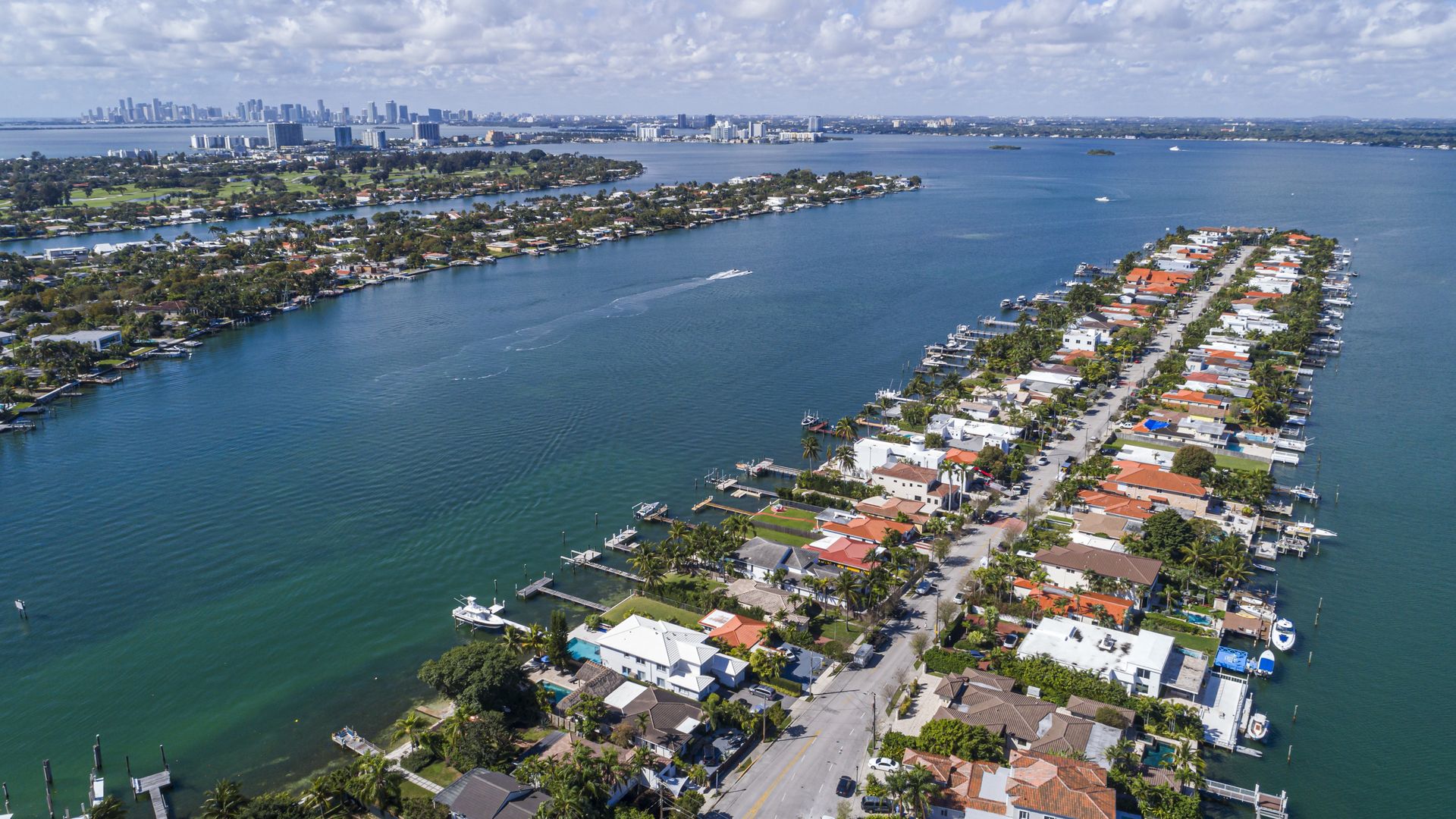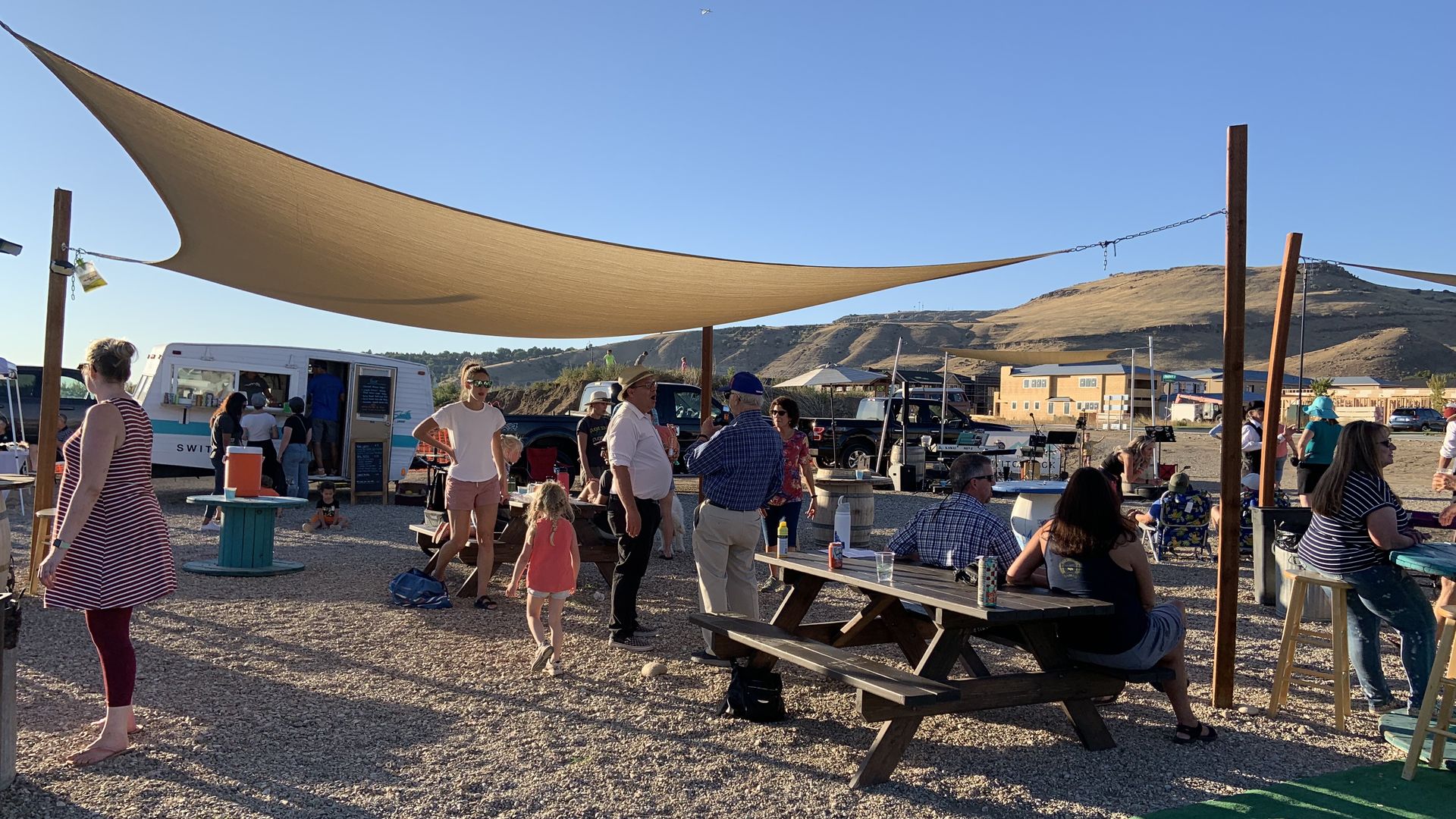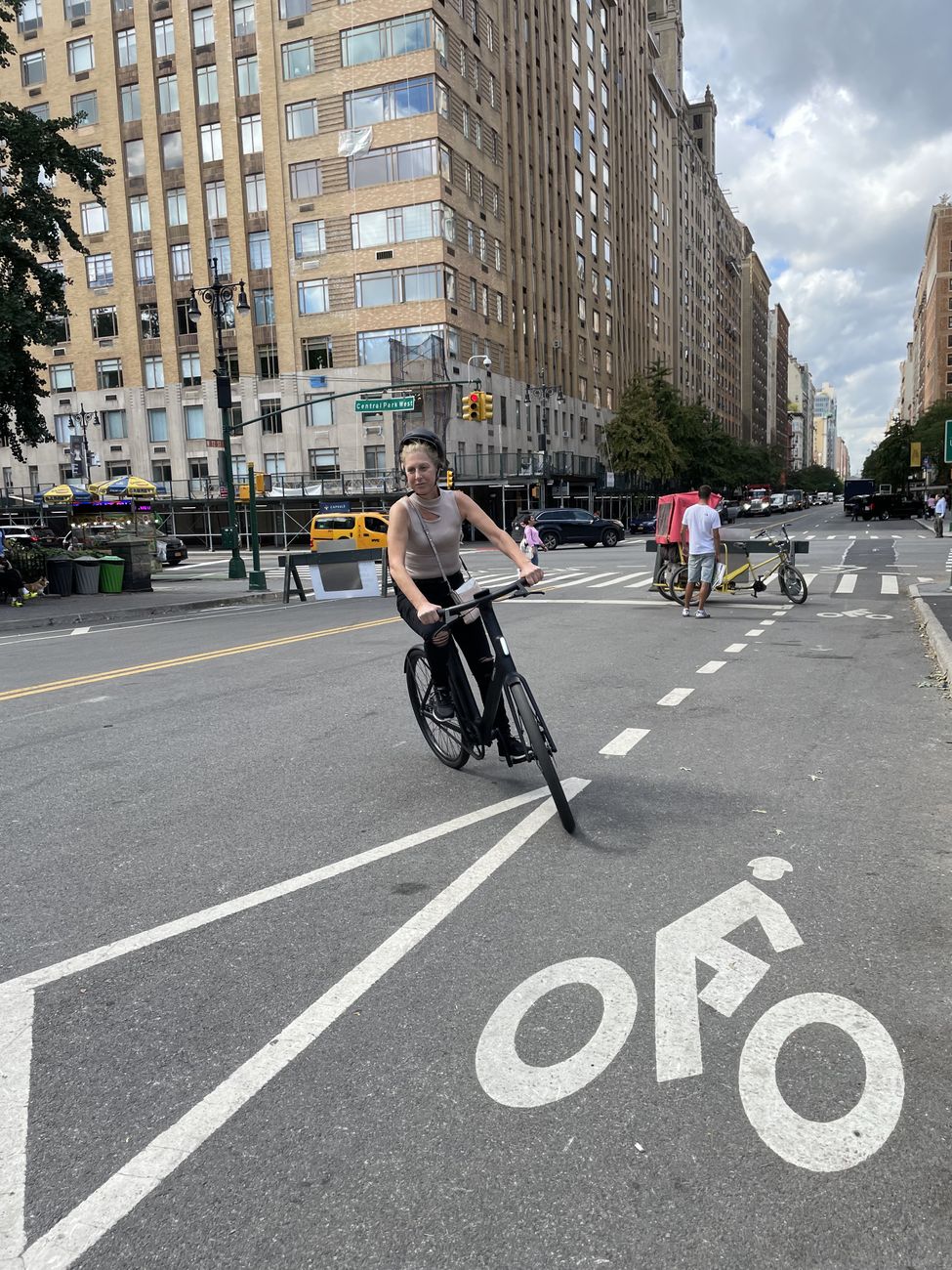| | | | | | | Presented By Charter Communications | | | | Axios What's Next | | By Jennifer A. Kingson, Joann Muller and Erica Pandey ·Sep 30, 2021 | | E-bike sales are soaring — more so than sales of conventional bikes — and Jennifer A. Kingson found out why during her first ride on one last week. - Today's What's Next reader photo comes from Karla A. Haun of Boise, Idaho, whose neighbors improvised a new way to socialize during the pandemic.
- Ahem: As much as we love your pet pix and vacation shots, we're looking for images that say something about how we're living, working and getting around for the foreseeable future — What's Next, in other words! Please bring 'em on: whatsnext@axios.com.
Today's Smart Brevity count: 1,089 words ... 4 minutes. | | | | | | 1 big thing: Electric bikes jolt U.S. cities |  | | | Illustration: Aïda Amer/Axios | | | | U.S. cities are seeing a dramatic surge of e-bike usage — driven in part by high-minded concerns (like the environment and pandemic safety) and in part by the coolness and fun factor, Jennifer writes. Why it matters: The proliferation of e-bikes and push for bike lanes are reshaping city geographies, social dynamics and even politics, as communities grapple with safety concerns and road-use jockeying. Where it stands: While we're way behind Europe — where cities like Paris and Amsterdam have seen commuters dump cars and conventional bikes en masse — most U.S. cities still haven't fully embraced the potential by building out bike lane systems with adequate safety features. - "It's a good thing that more people are gravitating toward bicycling — including e-bikes — and we've got to make sure we have safe, dedicated space for those users," says Leah Shahum, founder and director of the Vision Zero Network, which aims to eliminate traffic deaths nationally.
- Battery-assisted bikes are nothing new in places like the Bay Area, but they're gaining traction in cities like New York, which just legalized them in November of 2020 — in part to help low-income delivery workers do their jobs faster.
- Public bike-share programs like Citi Bike, Bird and Trek's Bcycle are converting their fleets to electric — and cities like Charlotte, North Carolina, have gone all-electric.
- So far, there doesn't seem to be conclusive evidence that the e-bikes — which tend to go under 25 mph — cause more accidents on city streets than regular bikes. (Though there have still been pockets of e-bike opposition.)
What they're saying: E-bikes are easy to use and will help you pedal — or not — as much as you want. - "I've never seen anybody come back from an electric bike ride without a smile," says Eric Bjorling of Trek, a bike maker based in Madison, Wisconsin.
By the numbers: Bicycles are a $5.3 billion business, up 65% in the 12 months ending July 2021 compared with 2019, per the NPD Group. - E-bike sales are up 240% in that period, way more than mountain bikes (70%) or children's bikes (57%).
What's next: High-end bike sellers are starting to flood the U.S. market with new products and subscription models, which will be hitting American cities soon. - Dance, a Berlin-based company with big-name financial backers (Jeffrey Katzenberg, Chance the Rapper), is about to introduce its subscription service here.
- "You get your own e-bike, and if it breaks — if it gets stolen, if anything happens to it — within 24 hours, we will have you another bike as good as new," co-founder Eric Quidenus-Wahlforss explained to Axios.
Author! Author! Jennifer tries the Cowboy in Central Park. Photo taken on Jennifer's iPhone by a Cowboy publicist. - Another young hopeful is Cowboy, a Brussels-based firm that let me try its ride in New York's Central Park last week.
The Cowboy 4 goes up to 20 mph and unlocks with your cellphone, which also tracks your rides and lets you map routes and compete with friends. Read the full story. |     | | | | | | 2. Where Latino clout is growing |  Data: Brookings Institution; Map: Thomas Oide/Axios The Hispanic or Latino population of the U.S. grew by 23% during the past decade — but some metro areas saw a boom three or more times that rate, as Axios' Stef W. Kight reports. Why it matters: The national population is changing, and the rapidly growing and more dispersed Latino populations come with important implications for U.S. politics. - While Democrats have typically enjoyed strong support among Latinos, there are signs some may be skewing Republican.
- And while counties with some of the most Latino representation tend to be in the Southwest, some of the fastest-growing Latino communities are in metro areas to the east.
By the numbers: In 1990, 2 in 5 Latinos lived in Los Angeles, New York, Miami and Chicago, writes Bill Frey of the Brookings Institution. - Now, about the same proportion are spread between those four metros, as well as Houston, Dallas and Riverside, California.
- All seven metro areas have more than 2 million Latino residents.
- But Latino communities are growing faster in areas that have smaller Latino populations to begin with — a sign of the demographics dispersing rather than congregating in a handful of cities.
Share this story. |     | | | | | | 3. Pandemic-era food trends |  | | | Illustration: Brendan Lynch/Axios | | | | This week is the start of the Specialty Food Association's big Fancy Food conference — which is virtual, alas — and Melanie Bartelme, a food analyst at Mintel, gave some trend observations, as Jennifer notes: - The shift to hybrid work schedules makes easy-to-use products more important than ever.
- Online grocery shopping will continue to explode as consumers enjoy the ease and convenience.
- Products that cater to our physical, mental and emotional health will take center stage as we focus on our well-being.
- Many shoppers face financial insecurity, so food brands must be mindful of price and value.
What they're saying: "There are no more rules anymore about how and when you eat," Bartelme said, per the Specialty Food Association's news feed. Jennifer's thought bubble: If only the show had been at NYC's Javits Center, this intrepid reporter would have been there for you. Here's what I wrote for Axios the last time the show was in town. |     | | | | | | A message from Charter Communications | | Charter is #1 in rural internet service | | |  | | | | We're proud to announce that Spectrum Internet ranks No. 1 in the U.S. News & World Report 2021-22 "Best Rural Internet Service Providers" survey. This recognition underscores our ongoing commitment to connecting more communities from coast to coast. | | | | | | 4. Worthy of your time |  | | | Homes in Miami Beach. Photo: Jeffrey Greenberg/Education Images/Universal Images Group via Getty Images | | | - The Cost of Insuring Expensive Waterfront Homes Is About to Skyrocket (The New York Times)
Starting Friday — Oct. 1 — federal flood insurance rates will start to rise around the country, "forcing Americans to pay something closer to the real cost of their flood risk, which is rising as the planet warms." A conversation with Scottish technology entrepreneur Chris Herd, author of this provocative future-of-work tweetstorm, who predicts a "remote-first" strategy in which colleagues will convene regularly — perhaps monthly — "in varying locations that suit the work that's being done." - Triple jeopardy: Children face dark future of climate disasters (NBC News)
Children born this year "will live on average through seven times as many heat waves, twice as many wildfires and nearly three times as many droughts, crop failures and river floods as their grandparents," according to this story, which reports on an article in the journal Science (subscription). |     | | | | | | 5. Reader photo of the day |  | | | Photo: Karla A. Haun | | | | What's Next: Spontaneous pop-ups for COVID-era socializing Karla A. Haun writes: "All summer, this high-growth community in Boise, Idaho, drew crowds to its less-than-glamorous empty lots. Food and drink trucks were soon followed by a booth or two selling handmade lotions and alpaca knitting. "Add some music and a little dirt/artificial turf, and you have just what families needed to gather with their kids and dogs in tow and enjoy community within a safe distance. Here's hoping they add heaters and fire pits this winter!" |     | | | | | | A message from Charter Communications | | Charter is #1 in rural internet service | | |  | | | | We're proud to announce that Spectrum Internet ranks No. 1 in the U.S. News & World Report 2021-22 "Best Rural Internet Service Providers" survey. This recognition underscores our ongoing commitment to connecting more communities from coast to coast. | | | | Thanks for reading! Please tell the folks at your local community pop-up to sign up for Axios What's Next. |  | | It'll help you deliver employee communications more effectively. | | | | | | Axios thanks our partners for supporting our newsletters. If you're interested in advertising, learn more here.
Sponsorship has no influence on editorial content. Axios, 3100 Clarendon Blvd, Suite 1300, Arlington VA 22201 | | | You received this email because you signed up for newsletters from Axios.
Change your preferences or unsubscribe here. | | | Was this email forwarded to you?
Sign up now to get Axios in your inbox. | | | | Follow Axios on social media:    | | | | | |










No comments:
Post a Comment